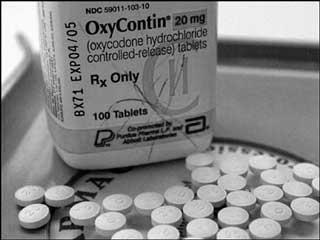 THUNDER BAY – HEALTH – By all accounts we are in the midst of a deadly drug epidemic so severe and widespread few people in North America will remain untouched by it. In case you think I’m exaggerating, right now we have probably the highest rates of narcotic abuse and deaths in modern history.
THUNDER BAY – HEALTH – By all accounts we are in the midst of a deadly drug epidemic so severe and widespread few people in North America will remain untouched by it. In case you think I’m exaggerating, right now we have probably the highest rates of narcotic abuse and deaths in modern history.
Critics have begun pointing the finger at the medical system and its prescribers – well-meaning doctors and specialists who’ve been giving too many patients excessively powerful opioid medications to deal with modest pain. But we can dig deeper and look at the relationship between medical education and pharmaceutical company influence as a significant contributing factor.
Typically the suggestion of an epidemic is hyperbolic, but it doesn’t seem so in this case. Last week, Dr. Perry Kendall, the provincial Health Officer in British Columbia said that BC has a bona fide “public health emergency” on its hands, mostly due to the alarming number of overdose deaths linked to prescription opioids.
Solution must include tackling what got us into the predicament in the first place
Opioids include prescription narcotics like Oxycontin, hydromorph Contin and fentanyl (which some say is 100 times stronger than morphine). Dr. Kendall said that there were more than 200 opioid-related overdoses so far this year in BC, and if those numbers continue, there’ll be 800 by the end of the year.
What’s happening in BC is just a small microcosm of what is happening across Canada, where we have some of the highest rates of prescription opioid consumption in the world. From 2006 to 2011, use of opioids in Canada rose by 32 percent and that rise has continued unabated, despite efforts to slow it down.
The United States is also in full-on damage control mode, trying to stem the incredible numbers of deaths due to opioids. In 2012, there were 259 million prescriptions written for opioids — enough to give every American adult their own bottle of pills. Since 2000, the overdose death rate in the U.S. has risen by 200 percent and there were nearly 19,000 opioid-related overdose deaths in 2014. Two weeks ago, I sat in a room while Dr. Vivek Murthy, the new Surgeon General of the United States, told the assembled crowd that he was driven to make the opioid epidemic a top priority in his administration due to the devastation he’s seen in communities all across the country.
He told us the U.S. experiences an overdose death every 24 minutes and the life expectancy of white, male, middle class Americans is dropping.
The problems, as well as potential solutions, are incredibly complicated but I agree with Dr. Murthy when he says that curbing society’s exposure to opioids — particularly those that come from a prescription pad in a doctor’s office — is absolutely vital. As he said: “Physicians need to be retrained to think twice — or three or four times — before writing that first opioid prescription.”
It’s important to recognize that liberal prescribing of opioids is a very recent problem and, since the mid-1990s, can be linked to the message-crafting activities of the pharmaceutical industry which helped shape both patient perceptions of pain and influence how doctors thought about the safety of these drugs. Doctors were increasingly encouraged — sometimes through industry-funded educational activities or by using textbooks on pain management paid for by the makers of opioids — to prescribe the drugs for a much wider population of patients experiencing pain.
If revising the messaging around opioids was a business-oriented strategy of the opioid makers, we cannot place the blame solely upon them. Some of that blame has to do with the co-dependent relationship between physician education and the drug industry, which funds a substantial portion of physician education in Canada.
Is this epidemic not dire enough to finally build the absolute firewall we need between physicians education and the pharmaceutical industry?
We need unbiased, safety-oriented messages around the appropriate use of opioids and knowledge of their wicked addiction potential. We also need to remind ourselves, both patients and prescribers, that any incredibly powerful and effective drug can also be incredibly dangerous and destructive.
The focus to tackle the addiction problem has to be serious, multifaceted source control. We need greater access to addiction treatment facilities, and methods to rescue people from the depths of addiction, certainly. But we also need to curb society’s underlying dependence upon drug company money for doctor training.
Alan Cassels is an expert advisor with EvidenceNetwork.ca and the author of the just-published, The Cochrane Collaboration: Medicine’s Best Kept Secret.




